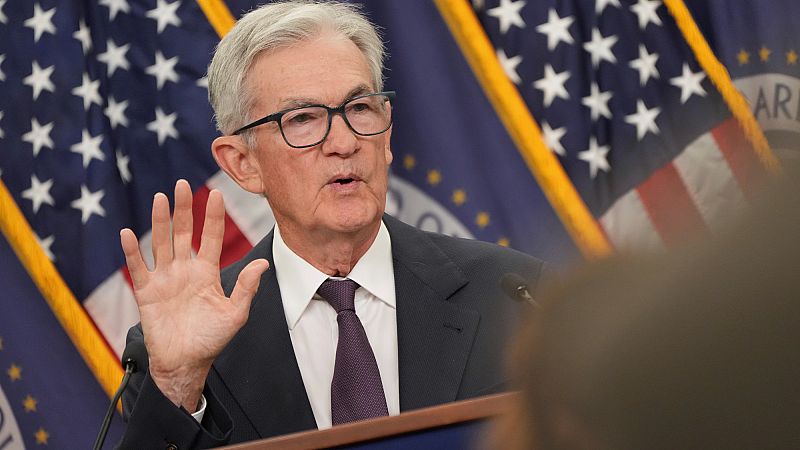Euro holds at 4-year highs, European equities soar on Fed’s dovish cut
Markets across Europe woke up in a buoyant mood on Thursday after the US Federal Reserve trimmed interest rates and signalled there could be more cuts to come.
The move lifted investor sentiment, pushing European stocks higher and keeping the euro hovering near a four-year peak.
The Fed lowered its benchmark interest rate by 25 basis points, bringing it down to 4.00%–4.25%. More importantly, the central bank’s updated economic projections hinted that this could be the beginning of a faster easing cycle. Stephen Miran, the new Fed Governor appointed by President Donald Trump, dissented and pushed for a more aggressive 50 basis point cut.
The Fed’s so-called “dot plot”, which charts policymakers’ expectations for future rate levels, now shows a median projection of 3.6% by year-end, implying two more 25 basis point cuts in 2025. Rates are projected to fall further to 3.4% by the end of 2026, and 3.1% by 2027.
Markets are now pricing in at least two more rate cuts by year-end.
The Fed’s shift didn’t go unnoticed in Europe. The euro held firm at $1.1830 on Thursday morning, after briefly touching $1.1920 the day before, a level not seen since June 2021.
European equity markets responded with robust gains.
The EURO STOXX 50 rose 0.8%, while Germany’s DAX climbed 1%. An index tracking European bank shares added 1.2% by mid-morning in Frankfurt.
Among the standout performers were tech and industrial names. SAP gained 3.3%, ASML added 2.6%, and Schneider Electric rose 2.5%.
In the banking sector, Spain’s Banco Santander and Germany’s Commerzbank were up by around 1%.
France’s CAC 40 added 0.8%, Spain’s IBEX 35 nudged up 0.3%, while Italy’s FTSE MIB hovered near flat.
Fed Chair Jerome Powell described the move as a “risk management cut”, acknowledging that while economic growth is holding up, the slowdown in job creation and a slight uptick in unemployment are raising early warning flags.
“It’s not a bad economy,” Powell said, but added that the Fed is moving now to support the labour market before any deeper downturn sets in.
Still, not all Fed members are convinced. Six of them signalled opposition to further cuts this year, according to BBVA strategist Alejandro Cuadrado, who indicated that the economic projections actually showed expectations for stronger growth, stickier inflation and lower unemployment.
Related
ING economist James Knightley expects rate cuts in October, December, January and March, followed by a pause to reassess. He described the Fed’s message as broadly supportive for markets, particularly as it implies the central bank is moving from a restrictive stance to something more neutral in an economy that’s still growing.



Leave a Comment
Your email address will not be published. Required fields are marked *